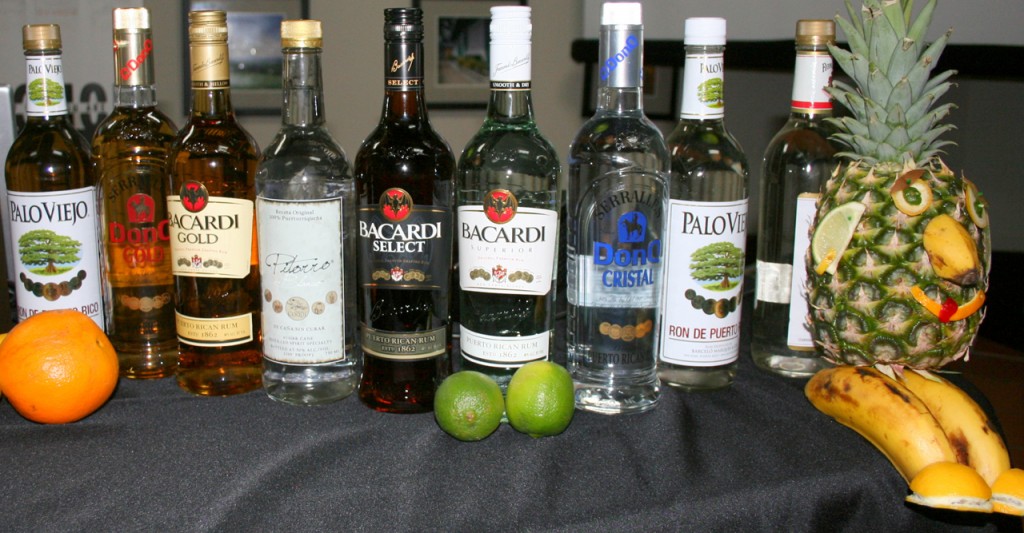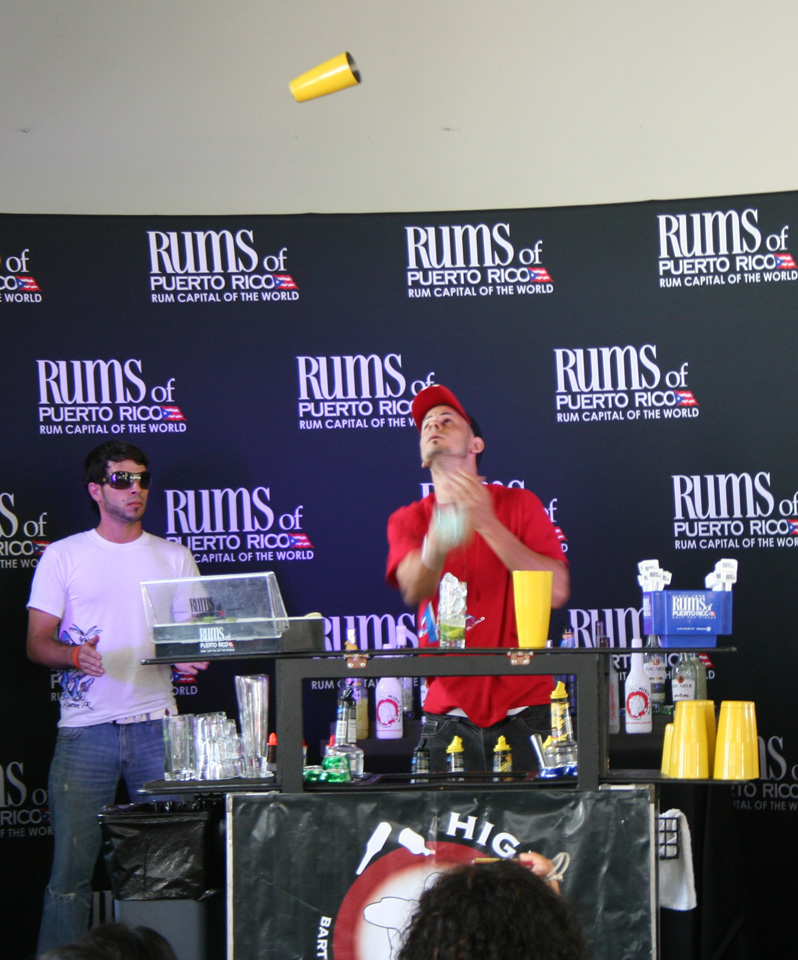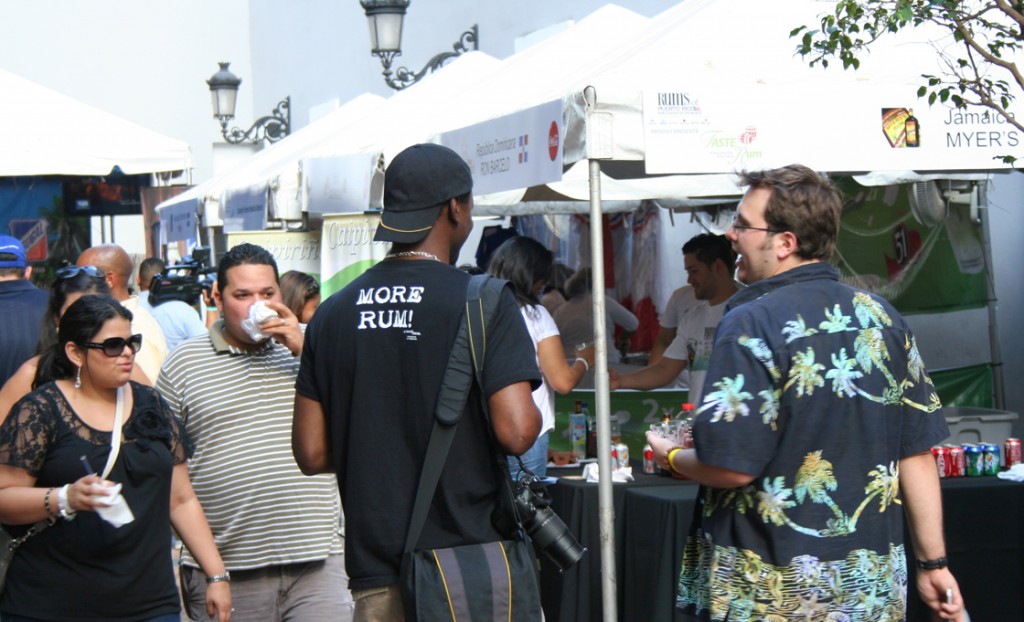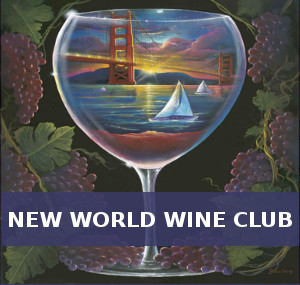Rum is often perceived of as a meager beverage, only good for the ubiquitous rum and Coke blend, or idle resort vacations where slurping sticky sweet piña coladas is mandatory. But the annual Taste of Rum Festival held in San Juan, Puerto Rico every March is changing those perceptions. The festival celebrates rums from Puerto Rico, Barbados, the Dominican Republic, Brazil, St. Croix, Jamaica and Brazil, along with Caribbean foods, salsa dancing and a even bartender flair competition. Over 2,000 people attend the eight hour festival to celebrate the regions’ signature spirit. Rum producers are on hand to mix rum and juice drinks, and to serve rums neat, depending on your preference.
Ultimately the festival, currently the only one of its kind in the world, is aiming to remind consumers that rum has finally come of age. In fact 75 percent of rums consumed in the U.S. are from Puerto Rico alone. Most rum begins fermentation with molasses, a by-product of sugar cane, while a few producers still use sugar cane juice. Almost exclusively there is only one strain of yeast used for fermenting the rum, and for the two major rum distilleries based in Puerto Rico, Destileria Serrallés and Bacardi, these single yeasts date to the companies’ foundations in the 1860s. But that is only part of the story. You need water, good water that can serve the rum process well. Serrallés for example gets their water from local rivers and lakes and use a five column distillation process. Some feel too much distillation can adversely affect the rum. Not that’s not the case for Silvia Santiago, Senior Vice President of Manufacturing at Destileria Serrallés, one of the oldest rum producers on the island. “It’s not a matter of stripping the rum,” she says, “that’s easy to do. It’s about removing specific things,” she advises; flavors and odors that are not wanted in rum. I was fortunate to visit with Serrallés and to tour their massive facility where about 250,000 barrels of rum are in a constant state of evolution as they age in over a dozen warehouses. Though not open to the public, my firsthand look at the distillery provided insights into the rum process. If you’re in San Juan, Serrallés does have a tasting room by the waterfront, or you can tour the Bacardi facility across the bay. The free hour-long tour will give you a basic understanding of making rum and as a bonus you are given two free drink tickets for a Bacardi rum of your choice while on the premises.
Premium rums are aged in older American bourbon barrels and can stay in cask for nearly a decade. Puerto Rican rums in particular must be aged by law a minimum of one year, if not longer. Having long abandoned the astringent rums of yesteryear, producers like Tommy Bahama, Brugal, Serrallés and Bacardi are turning out world-class aged rums which don’t need a sugary soda to compliment them. Sipping rums such as the Don Q Añejo ($18), a beautiful añejo that has light burnt caramel and butterscotch are becoming, as they should be, sought after. Aged for a minimum of three years in American bourbon barrels, this is a rum with a soft velvety character on the palette and honey and a back note of apricot. The interesting thing about rums is also their sense of place. In wine we call it terrior. “Rums are similar to beers,” Santiago says, “they can range from heavy to light. There’s a regional diversity to the rums in Puerto Rico that you can taste.” And the same is true with rums from the Caribbean as a whole – they will all be different and you need to sample them to find the one that’s right for you.
As for the festival, held near the bay of San Juan, it is loud, energetic and festive with locals and tourists happily sampling rum, dancing spontaneously and reveling in the infectious atmosphere that the Taste of Rum Festival offers. The rums of Puerto Rico and the Caribbean are achieving depth, diversity of aroma and layered flavors and are worth seeking out. With Johnny Depp’s new film, “The Rum Dairy,” set to open in the summer of 2010 and shot in San Juan, new converts are sure to discover the beauty of rum.
Story and Photos By Michael Cervin














